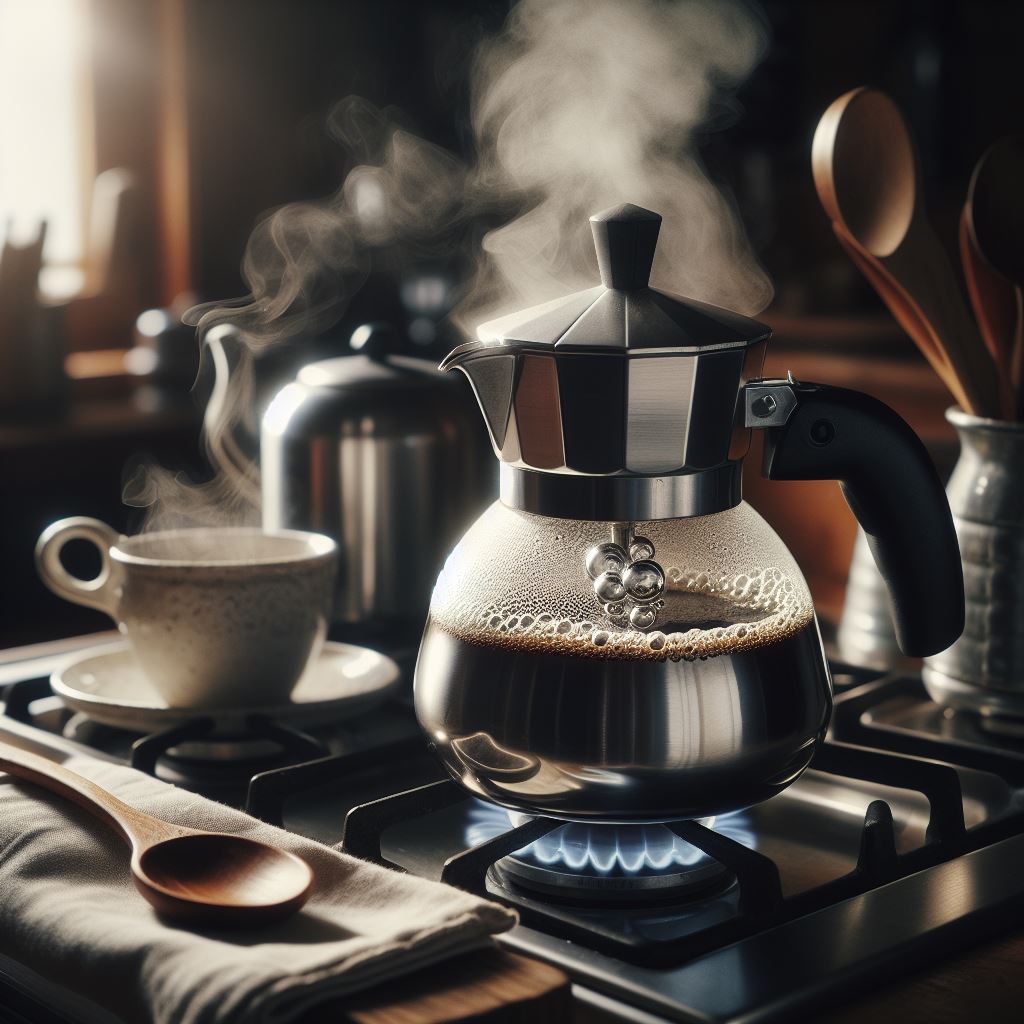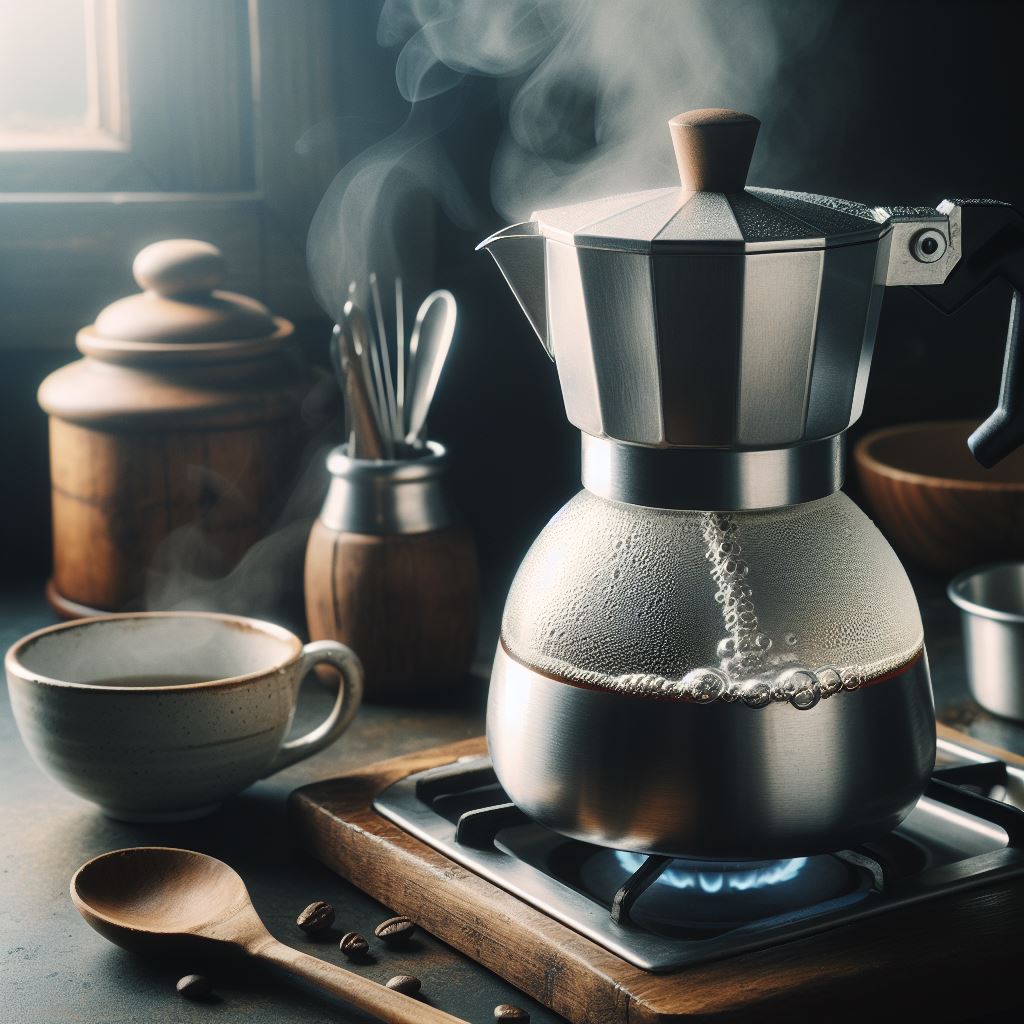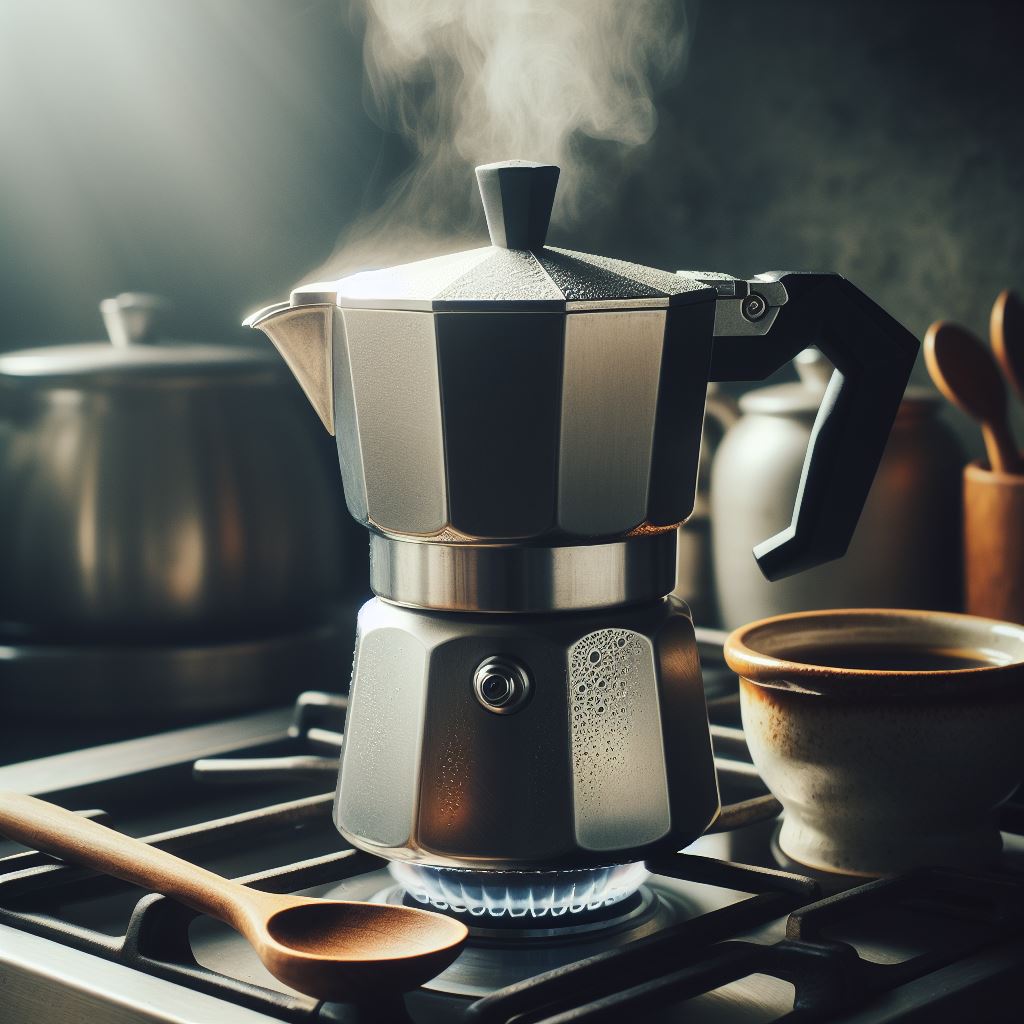There’s something truly comforting and animating about tasting some recently mixed coffee first thing.
The smell, the taste, the gleam – everything adds to sending off the day with an elevating tone. In any case, in a world overpowered by luxurious coffee machines and exorbitant bistro trips, the specialty of making coffee on the stove is slowly being dismissed.
In this blog passage, we’re getting back to fundamentals, letting you know the most effective way to mix your optimal cup of joe using just your burner and several essential advances. Keep close by expecting that you’re ready to raise your at-home coffee mixing experience!
How to make coffee on the stove 5 Easy Guides
Step 1: Gather your materials
To make tasty burner coffee, you’ll require two or three key things: new coffee beans, a processor, a burner coffee maker (generally called a Moka pot), water, and a power source (like a stove).
Stage 2: Drudgery the espresso
A decent mug of espresso begins with the right drudgery. For burner espresso, you need to go for the gold drudgery. This ought to seem to be granulated sugar.
Stage 3: Fill the Moka pot
In the first place, fill the base office of your Moka pot with water. Then, place the espresso beans into the pot’s channel container, taking consideration not to overload or pack down the grounds.
Stage 4: Blend the espresso
Put your Moka pot on the stove over medium power. The water in the base chamber will heat up, make strain, and push the water through the coffee beans into the top chamber.
Stage 5: Appreciate
When the top chamber is loaded up with espresso, eliminate the Moka pot from the intensity. Immerse your number one cup, add any ideal additional items (like cream or sugar), and enjoy your ideal custom made espresso.

Introduction to Stovetop Coffee Making
Coffee Origins
Understanding your espresso’s starting points can upgrade your preparing experience. Espresso beans are become across the world, with every district bestowing interesting flavor profiles.
Picking Your Beans
It is significant to Choose the right beans. Various beans have particular preferences, which influences the kind of your blended espresso. Try different things with different kinds to find your inclination.
The Significance of Newness
For the best espresso, utilize new beans and drudgery them not long prior to blending. Pre-ground espresso might be helpful, yet new ground beans give an unrivaled flavor.
Cleaning Your Moka Pot
Ordinary cleaning of your Moka pot is fundamental for keeping up with the ideal taste. Buildup develop can adversely influence your espresso’s flavor over the long run.
Relishing the Experience
Remember, coffee mixing isn’t just about the completed outcome; it’s similarly about the trip. Carve out a time to partake in the experience, from the smashing of the beans to the primary taste of your hand created mix.
Understanding the Basics
Understanding the Coffee Bean
Espresso beans come in two essential sorts: Arabica and Robusta. Arabica is by and large considered to have a smoother, more intricate flavor, while Robusta is more grounded and somewhat unpleasant.
The Job of Broiling
Broiling is a pivotal interaction that changes green espresso beans into the fragrant earthy colored beans we use for preparing. The dish level altogether influences the flavor of your espresso.
The Specialty of Crushing
Pulverizing coffee is connected to exploiting your beans. The size of the drudgery should contrast with the kind of coffee maker you’re using. For Moka pot, a medium work is proposed.
Water Quality Matters
The idea of water you use to blend your coffee can in a general sense impact the taste. Ceaselessly use new, cold, and obviously filtered water for the best results.
The Ideal Pour
The last phase of making espresso is pouring it accurately. A delicate, even pour guarantees you will not upset the coffee beans, keeping your cup clear and the flavors unblemished.

Step-by-Step Guide to Making Stovetop Coffee
Preparing Your Workspace
Before you start aging, ensure your workspace is flawless and facilitated. Gather all of the imperative materials and spot them inside straightforward reach to ensure a smooth mixing process.
Choosing Your Espresso
Quality espresso begins with quality beans. Pick an assortment that suits your taste inclination and guarantee they are new for the best character. In the event that conceivable, pick entire beans and toil them not long prior to blending.
Estimating Your Espresso
The strength of your espresso relies upon the espresso to-water proportion. An overall guideline of thumb is to utilize 1 to 2 tablespoons of ground espresso per six ounces of water, however go ahead and change as indicated by your inclination.
Blending the Espresso
Put your Moka pot on the oven and intensity at medium-high intensity. Recollect not to rush the preparing system, let the espresso brew at its own speed to extricate the full scope of flavors.
Serving Your Espresso
When your espresso is prepared, serve it promptly to partake in its full flavor. Keep in mind, espresso is best delighted in new, so attempt to try not to allow it to sit on the burner for a really long time as it can turn out to be harsh.
Troubleshooting Common Issues
Coffee Tastes Bitter
Assuming that your espresso tastes harsh, it could be because of over-extraction. Have a go at involving a coarser drudgery or fermenting your espresso for a more limited time frame.
Espresso Tastes Harsh
Soured espresso is much of the time a consequence of under-extraction. For this situation, think about involving a better toil or blending your espresso for a more drawn out time frame.
Espresso is Excessively Powerless
Assuming your espresso is excessively feeble, you might be utilizing too little espresso. Increment how much espresso utilized for each mix.
Espresso is Major areas of strength for excessively
Assuming your espresso is areas of strength for excessively, might be utilizing a lot of espresso. Diminish how much espresso utilized for each brew.
Espresso isn’t adequately hot
If your coffee isn’t adequately hot, ensure that your water is warmed to the real temperature before aging. For most mixing procedures, the ideal water temperature is between 195-205 degrees Fahrenheit.

Experimenting with Flavors and Styles
Exploring Different Beans
Trying different things with beans from various districts can radically change your espresso’s flavor. From the fruity hints of Ethiopian beans to the rich, full-bodied kind of Colombian assortments, there’s a universe of taste to investigate.
Adding Flavors
Flavors can add a thrilling turn to your everyday brew. Think about attempting cardamom, cinnamon, or even a spot of cayenne pepper for an astonishing flavor support.
Utilizing Different Blend Techniques
Evaluating different blending strategies can likewise affect your espresso’s taste. French press, pour-over, and Aeropress all proposition one of a kind flavors and surfaces.
Playing with Milk and Sugars
Milk and sugars offer one more element of flavor. From foamy cappuccinos to improved chilled espressos, are vast ways of altering your cup.
Tasting Various Dishes
Other than the espresso bean’s starting point, the meal level likewise assumes a critical part in flavor. Exploring different avenues regarding light, medium, and dim meals can assist you with tracking down your ideal brew.
Conclusion
Turning into the best at burner coffee making is a journey of examination and exposure. From understanding the basics of coffee beans, cooking, and squashing, to the nuances of getting ready and serving, each step adds to the last taste of your mix. Remember, the way in to an exceptional cup of coffee is steadiness, practice, and a status to investigate. Make it a highlight research different beans, techniques, and flavor increments. The universe of coffee is colossal and contrasted – make a dive, share all the while, and love each essence of your faultlessly made cup.
FAQS
Q1. How do you make regular coffee on the stove?
To make standard espresso on the oven, you’ll require a burner espresso creator, similar to a Moka pot. Fill the base chamber with water, the pipe with espresso, and put on medium intensity. As the water warms, it’ll permeate through the espresso into the top chamber. Once fermented, serve right away.
Q2.How do you make coffee on the stove without a coffee maker?
Making espresso on an oven without an espresso producer is basic. You can utilize the “bubbling technique.” Add 1 to 2 tablespoons of ground espresso to some water and heat it to the point of boiling in a pot. Allow it to bubble for around 2 minutes. Then, eliminate from intensity and allow it to sit for 4 minutes to permit the grounds to settle prior to pouring and appreciating.
Q3. How do you make coffee without a coffee filter?
To make coffee without a coffee channel, use the “steers rustler strategy.” Add water and espresso beans into a pot and intensity with the eventual result of bubbling. Right after rising for 2 minutes, kill the pot from power and permit it to sit for 4 extra minutes to allow the grounds to settle before pouring.
Q4. How do you grind coffee for a stove top?
To crush espresso for a burner, utilize a burr processor and change it to a medium-fine drudgery. This size is ideally suited for burner espresso producers like the Moka pot, permitting boiling water to separate the perfect proportion of flavor without over or under-extraction. Continuously grind not long prior to fermenting for the freshest taste.
Q5. How do you make coffee on the stove without a filter?
To make coffee on the stove without a channel, you can use the “Cowpoke Strategy.” Basically add your espresso beans directly into a pot of water and intensity it with the eventual result of bubbling. At the point when percolated, let it sit for two or three minutes to allow the grounds to settle before carefully discharging your coffee into a cup, ensuring to leave the grounds.
Q6. How much coffee do you put in stovetop coffee?
For burner coffee, a general rule is to use 1 to 2 tablespoons of ground coffee per six ounces of water. Regardless, you can change this extent according as you would prefer tendency, whether you like solid areas for it delicate.
Q7. How do you make coffee with just boiling water?
To make espresso with simply bubbling water, utilize the “Rancher Strategy.” Add 1-2 tablespoons of coffee beans to a pot, pour in bubbling water, then, at that point, let it steep for around 4 minutes. The coffee beans will settle at the bot.
Q8. Can you make coffee on an electric stove?
Totally, you can make espresso on an electric oven. The interaction is indistinguishable from utilizing a gas oven. Simply guarantee to deal with the intensity accurately, as electric ovens might take more time to warm up and chill off than gas ovens.
